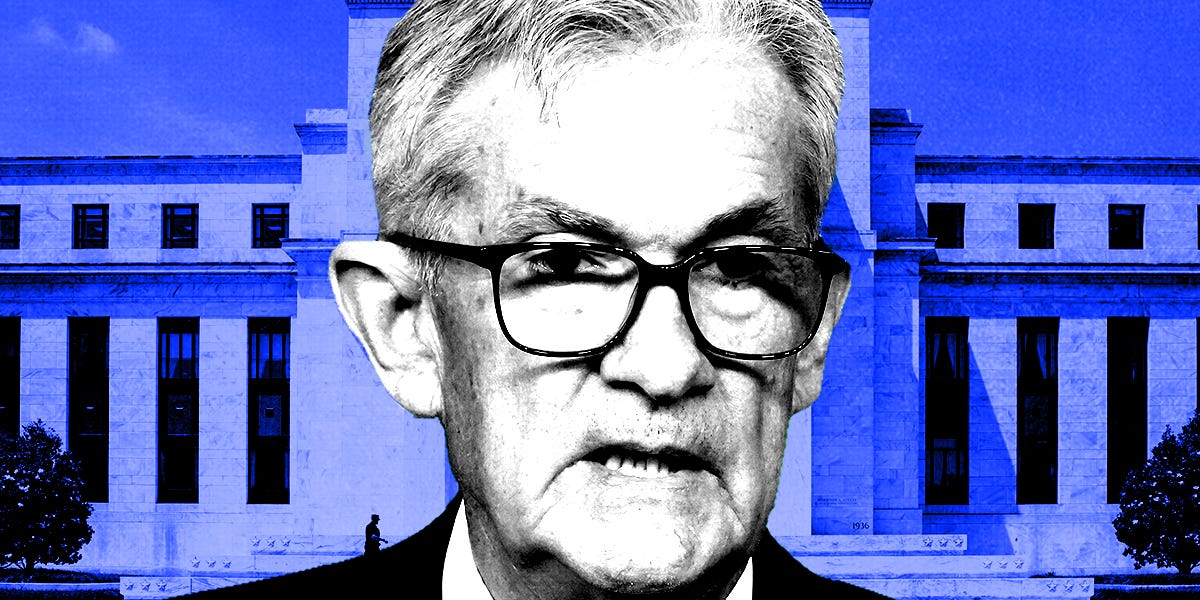- The upcoming inflation report will help determine the Fed’s next move.
- Friday’s surprisingly strong jobs data has slashed bets of a half-point rate cut.
- The Fed is more likely to leave rates unchanged in November if price growth is strong, UBS says.
The labor market’s unexpected surge in September has left investors wondering about the path of Federal Reserve policy after the central bank said it’s shifted focus to the labor market after years of battling inflation.
However, following the strong payroll report, market commentators say they’re still concerned that inflation may not be completely in the rear-view — and next week’s consumer price index report will be key.
The US saw an astonishing 254,000 new jobs added last month, smashing consensus estimates of 147,000. The unemployment rate dropped to 4.1%.
According to economist Mohamed El-Erian, this permits the Fed to once again devote some of its attention to fighting inflation. Inflation concerns took a back seat in recent months as the central bank shifted focus toward what appeared to be a deteriorating labor picture.
But with September’s jobs report crushing expectations, concerns may have been premature.
“For the Fed, it means push back much harder against pressure from the markets to put you in the single-mandate box,” El-Erian told Bloomberg TV. “Enough talk about ‘inflation is dead.’ Inflation is not dead. Enough talk about the Fed should only be concerned about maximum employment.”
UBS suggested that the upcoming consumer price index report will be the next big thing for markets.
“CPI for September will be a key data release. If prices rise faster than expected on top of the stronger labor data, chances for the Fed to skip the November meeting will increase,” UBS senior economist Brian Rose said in a Friday note.
Bank of America analysts wrote on Friday that the Fed may have panicked last month and that another jumbo cut is probably not warranted. The bank adjusted its forecast for the November Fed meeting to call for a 25-basis-point move after previously predicting 50 basis points.
Few analysts have implied that the Fed will leave interest rates unchanged next month, but investors have markedly readjusted expectations.
Virtually no trader projects that the Fed will slash interest rates by a half-point in November, although the odds of another big move stood at around 33% before Friday’s jobs report. CME FedWatch data now indicates a 99% chance of a quarter-point cut.
Just 1% expect rates to be unchanged.
How inflation data could compound these forecasts will be known on Thursday, when the CPI report comes out.
Though banks such as Barclays have suggested that the job market’s strength has the potential to renew inflation concerns down the line, a large upswing is by no means a consensus call.
For instance, Bank of America forecasts a 0.1% and 0.3% month-over-month gain in September’s headline and core CPI, respectively. Those moves shouldn’t be enough to impact the Fed’s thinking.
Still, with inflation still slightly above the central bank’s 2% target , some analysts are cautioning investors not to forget about price pressures.
According to Principal Asset Management’s Seema Shah, the labor surprise only makes this more relevant.
“Markets will need to keep a closer eye on inflation as, now, there are policy risks on both sides of the economy,” the chief global strategist said.

